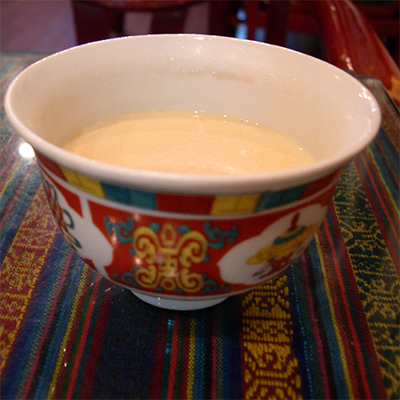Food & Cuisine
Leh Ladakh is one of the places that are on everyone’s road trip bucket list. A majority of people think Ladakhi cuisine is everything about momos and also noodle soups, but in reality, it is so much more. A lot of people see Ladakh for its cuisine. There is a lot of unique as well as interesting food of Ladakh.
Ladakh’s cuisine is a combination of Tibetan, Chinese, and Continental and Korean dishes.
Thukpa: Thukpa is a much-loved classic of Ladakhi cuisine. It is a clear soup with vegetables and noodles made of wheat or barley flour. This dish also often contains meat such as pieces of chicken, mutton or yak. Thukpa is customarily served with spicy “chutney” to further enhance the taste. There are multiple versions of this noodle soup and all kind of savoury ingredients can be added for a subtle blend of flavours.
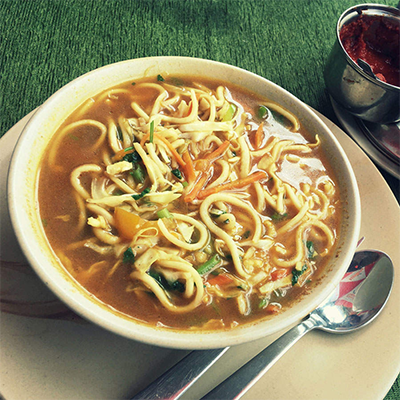
Skyu: Skyu is another traditional soup-based Ladakhi speciality. It is a stew made with wheat dough kneaded into thumb-sized flatten balls. It is slowly cooked in a pot with water, meat and root vegetables such as potatoes, turnips and carrots. This mouth-watering dish is often prepared in villages and its recipe has remained unchanged for centuries. This heavy and high-calorie food containing energy in the form of carbohydrates is a favourite during the cold winter months when the temperature falls to below freezing and for those doing trekking. In villages, it is also habitual to include fresh milk as a main ingredient. In that case, the dish is called oma-skyu, “oma” means “milk” in Ladakhi language. A particularly tasty variant that you must try if you have the opportunity.
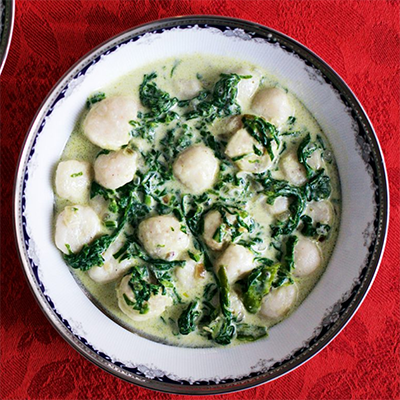
Chutagi: Chutagi is a famous pasta-like dish with a rich vegetable-based sauce. This is one of Ladakh’s signature dishes and every local restaurant in Leh has its own secret Chutagi recipe. “Chu” means “water” in Ladakhi and “tagi” means “bread”. Therefore, the literal translation of “Chutagi” is “water-bread”.
Chutagi is a delicacy consisting of bow-tie-shaped pieces of dough cooked in a thick soup made of potatoes, carrots, peas, and local leafy green vegetables (similar to spinach). A non-veg version of this dish with meat is also very common. A delicious Ladakhi culinary speciality which is very nutritious too!
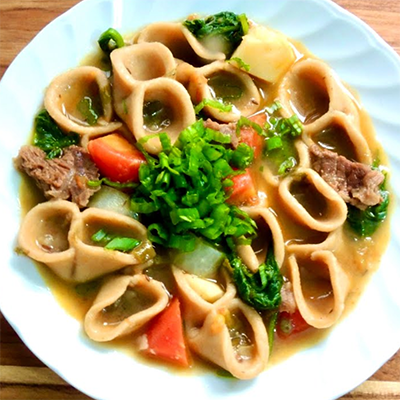
Chaang: Chang is a traditional alcoholic beverage, Ladakh’s “local beer” made from barley with 5% to 7% alcohol. People have been drinking chang for centuries during festive occasions. For marriage proposal, the boy’s uncle offers a pot of chang to the girl’s family. For a child’s birth, family and neighbours bring chang to the parents along with butter and flour. As a sign of respect, chang is served to guests with a small piece of butter on the brim of the cup. Before drinking, the guest dips a finger into the beverage and flick a few drops in the air as an offering to the gods. It is usually done three times for the Buddha, the Dharma, and the Sangha.
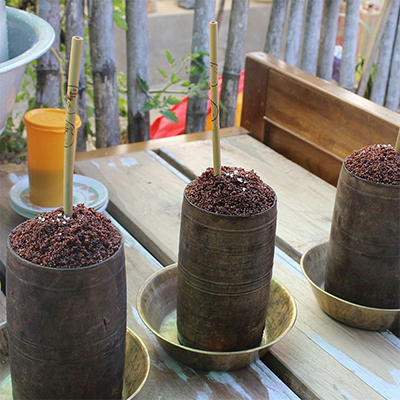
Butter Tea: Butter tea is a traditional pinkish beverage of the Himalayan regions. In Ladakh, butter tea is also known as “gur-gur chai”. Its particularity is that yak butter and salt are added to the boiling water infused with tea leaves. This very caloric drink is excellent for cold weather and high altitude. The butter also helps keeping the lips moisturized, replacing lip balm!Ladakhi people drink salted butter tea every day. It is also the traditional beverage served during weddings and other special occasions. In the Ladakhi hospitality tradition, the host constantly refills the guest’s cup to the brim as soon as a few sips are drunk so that the cup is never empty. If the guest does not wish to drink more, the cup should be left full until the guest leaves.
Apart from all these, one can have Momos, Saag, Tigmo, Holkur, Chhurpi Etc.
